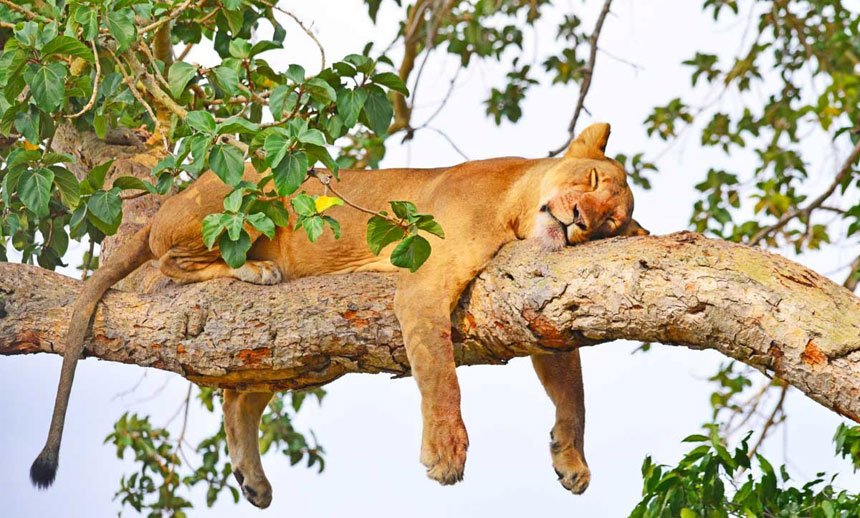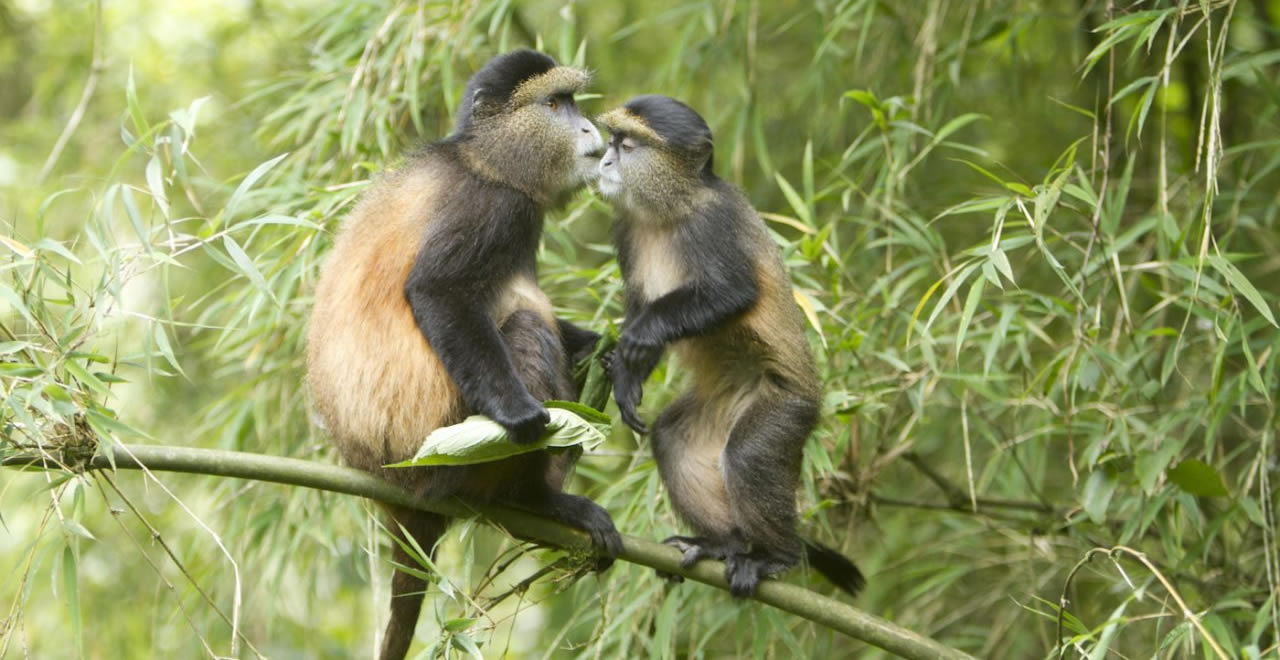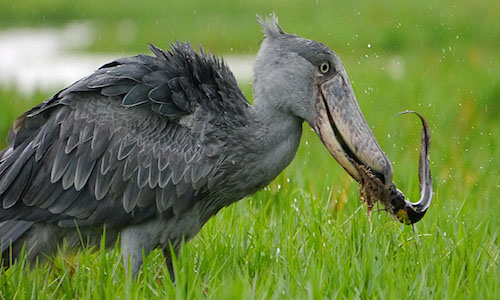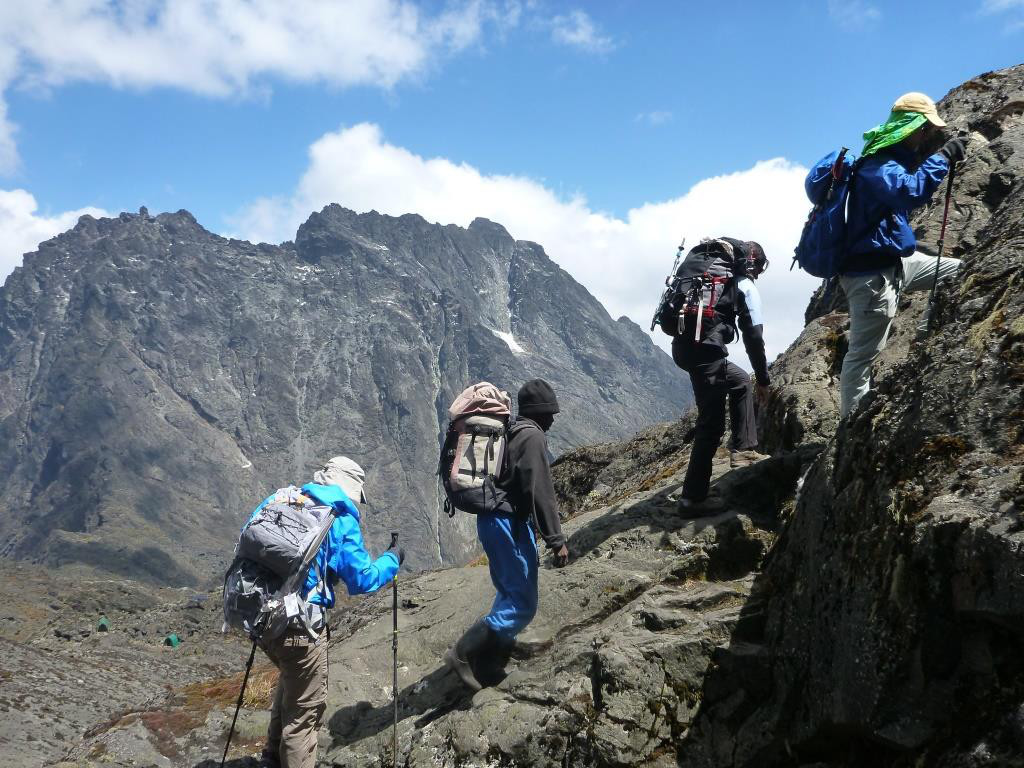The great Wildebeest migration is ranked as one of the best wildlife experiences in the world. Wildebeests follow a loop path through Tanzania and Kenya. It is an ever-circular movement of these great angulates across the Mara – Serengeti Eco-system. At the end of the year, they are calving in the Southern Serengeti and then begin the northern trek that puts them to great danger as huge crocodiles wait to feast on them along the river banks.
The 482 Kilometer (300 Miles) migration loop is the largest migration of angulates in the world. Approximately 1,000 animals per Sq. Km can be viewed from space. Here also comes the hungry predators including lions, cheetahs, leopards, hyenas, wild dogs and crocodiles that prey on these angulates. The lucky and strongest survive this natural spectacle known as ‘the Greatest Show on Earth’.
The migration circuit begins from the Southern Serengeti near Ngorongoro along the Ngurumetti River and traverse the Mara River north-west to Kenya’s Masai Mara national park and then back again. Thus, the best time to visit the South-east and Ndutu is December up to May; the Western corridor from May to July; the Northern Serengeti Mara area July to October and the Northern Serengeti and Lobo area October and November would be the ideal time for big herds of wildebeests.
However sometimes nature poses a lot of uncertainties. For instance, in November 2013 the wildebeests begun migrating southwards in search for short green pastures in Southern Serengeti but when it started raining north of Mara again in just 2 weeks, they returned to Masai Mara. In 2014 abrupt rains in the southern Serengeti forced the biggest herd to hesitate to undertake the northbound trip towards the western corridor until July.
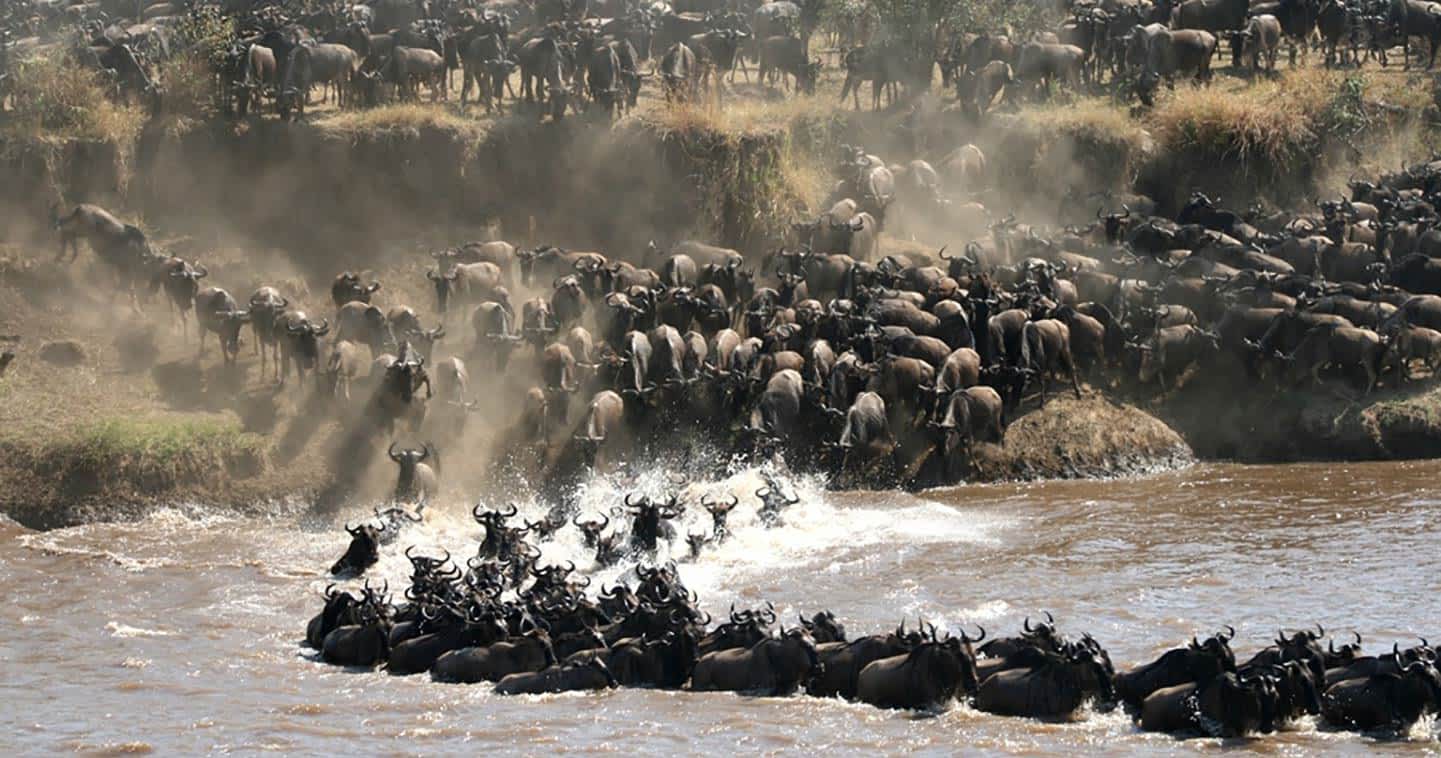
The Great Wildebeest calendar
- December – April
There is great calving in Saronera and Ndutu in the southern Serengeti national park. Predators including cheetahs, lions, leopards, lions and jackals find the calves an easy prey. - May – July
After enjoying the short green grass in Southern Serengeti, the wildebeests begin preparing the 800 Km great trek to the western by crossing the crocodiles infested river Ngurumeti. The actual migration begins around late April and early June staying at the bank of the river for 2 weeks for fear of the gigantic crocodiles feasting on them. But later they forcefully cross despite losing a big number of them to the predators. - August – September
After successfully crossing the Ngurumeti river, the surviving wildebeests move further north towards another big obstacle – the Mara River. At this point most guests have a photo opportunity. The wildebeests are most likely to cross in the month of July or August towards the northwest plains and the Masai Mara national park in Kenya. However almost half of the herds remain in the northwest Serengeti leaving at least 500 herds and thousands of animals to cross to Masai Mara back and forth. At this time most Serengeti Mara Camps are fully booked and indeed very expensive.
- October to November
The Wildebeests cross the Mara River twice. They cross northwards first and later southwards in October and sometimes much earlier. They cross Lobo Area and the northern plains. In the late November they begin calving in Ndutu and the Southern Serengeti as they get ready for another migration.
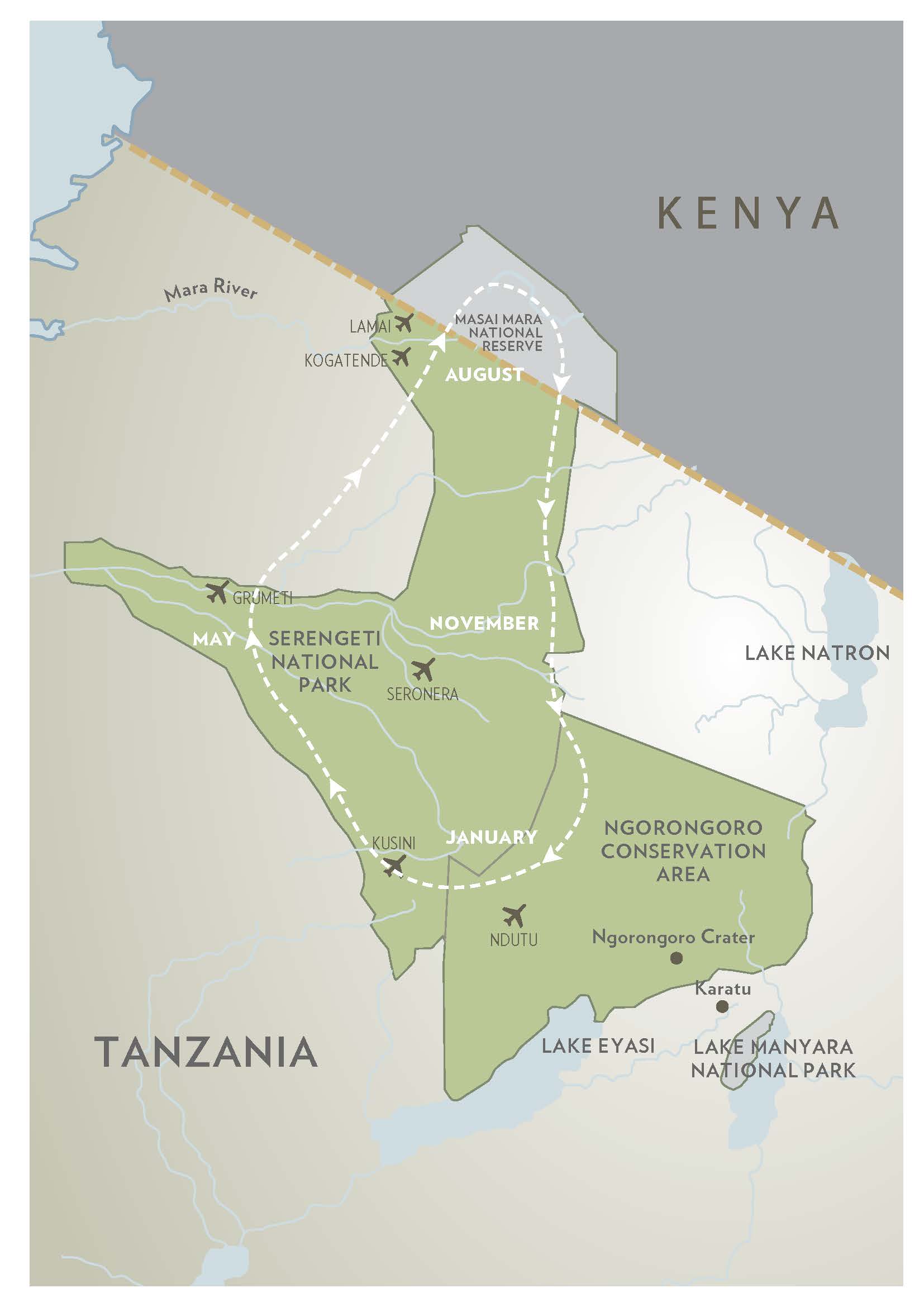
Wildebeest Path


